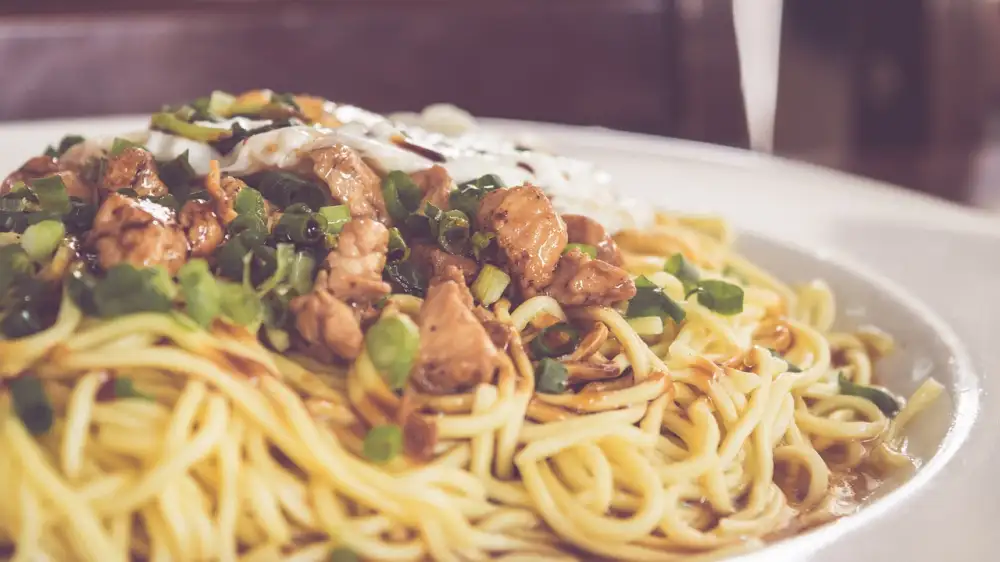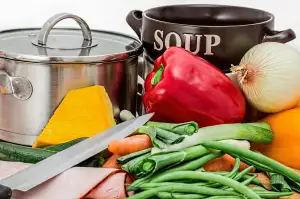Master the Art of Stir Fry: Unleash the Flavors of Asian Cuisine

Stir fry is a cooking technique that originated in Asia and has become popular worldwide. It involves quickly frying small, bite-sized pieces of food in a hot pan or wok, often with a small amount of oil. The high heat and fast cooking time help to retain the natural flavors and textures of the ingredients. Stir fry is known for its vibrant colors, bold flavors, and crispy yet tender results. Whether you're a novice cook or an experienced chef, mastering the art of stir fry will open up a world of delicious possibilities in your kitchen.
Benefits of Stir Fry Cooking Method
The stir fry cooking method offers numerous benefits that make it a popular choice in Asian cuisine. Firstly, it allows for quick and efficient cooking, as the ingredients are cooked at high heat for a short period of time. This helps to retain the natural flavors, textures, and colors of the ingredients.
Secondly, stir frying requires minimal oil, making it a healthier option compared to other cooking methods such as deep frying. The high heat used in stir frying also helps to seal in the nutrients of the ingredients, ensuring that they remain intact.
Furthermore, stir frying allows for endless versatility and creativity in the kitchen. You can easily customize your stir fry by choosing a variety of vegetables, proteins, and sauces to suit your taste preferences.
Lastly, the stir fry method is perfect for busy individuals as it requires minimal prep time and cooking time. With just a few simple steps, you can have a delicious meal ready in no time.
In summary, the benefits of stir fry cooking include preserving flavors and nutrients, promoting healthy eating habits, offering versatility in ingredient choices, and providing a quick and convenient cooking option.
Essential Ingredients for Stir Fry
To create a mouthwatering stir fry, you'll need a handful of essential ingredients. These flavorful components are the building blocks of any successful stir fry dish. Here are the key players:
1. Protein: Choose from chicken, beef, pork, shrimp, or tofu to add a hearty element to your stir fry.
2. Vegetables: Opt for an assortment of colorful vegetables like bell peppers, broccoli, carrots, snap peas, and mushrooms. These provide crunch and vibrant flavors.
3. Aromatics: Garlic and ginger are must-have aromatics that infuse your stir fry with irresistible fragrance and depth of flavor.
4. Sauce: The sauce is what brings everything together in a stir fry. Common sauces include soy sauce, oyster sauce, hoisin sauce, and sesame oil.
5. Oil: Use a high smoke point oil like vegetable oil or peanut oil for cooking the ingredients quickly over high heat.
6. Seasonings: Enhance the taste with salt, pepper, chili flakes or powder to add a kick to your stir fry.
By having these essential ingredients on hand, you'll be well-prepared to whip up a delicious stir fry that will impress your family and friends!
Step-by-Step Guide to Stir Fry
1. Prepare your ingredients: Slice vegetables, dice meat, and gather sauces and spices.
2. Heat a wok or large skillet over high heat and add oil.
3. Add aromatics like garlic, ginger, or onions to infuse flavor into the oil.
4. Add meat or protein and cook until browned on all sides.
5. Push the meat to one side of the wok and add vegetables in batches, starting with those that take longer to cook.
6. Stir fry the vegetables for a few minutes until they are crisp-tender.
7. Create a well in the center of the wok and add your sauce mixture.
8. Toss everything together until well-coated in sauce.
9. Cook for another minute or two until everything is heated through.
10. Serve immediately over rice or noodles for a delicious stir fry meal!
Tips for Perfecting Stir Fry
1. Prep all ingredients beforehand: Stir fry is a quick cooking method, so it's important to have everything ready before you start. Chop vegetables, slice meat, and prepare sauces in advance to ensure a smooth cooking process.
2. Use high heat: Stir fry requires high heat to quickly cook the ingredients while maintaining their texture and flavors. Make sure your wok or pan is hot before adding the oil and ingredients.
3. Work in batches: Overcrowding the pan can lead to steaming instead of stir frying. Cook in small batches, allowing each ingredient to come into direct contact with the hot surface for that delicious caramelization.
4. Keep it moving: As the name suggests, stir fry involves constant stirring and flipping of ingredients. This ensures even cooking and prevents sticking or burning.
5. Add aromatics first: Start by sautéing garlic, ginger, or onions in hot oil before adding other ingredients. This infuses the dish with incredible flavor right from the beginning.
6. Sauce it up at the end: To avoid soggy stir fry, add sauces towards the end of cooking. This allows them to coat the ingredients without making them overly soft or mushy.
7. Don't forget about texture: Stir fry is all about achieving a perfect balance of textures - crisp vegetables, tender meat, and slightly crunchy nuts or seeds. Pay attention to cooking times to achieve this desired result.
8. Experiment with seasonings: While soy sauce and oyster sauce are commonly used in stir fry recipes, don't be afraid to explore other Asian condiments like hoisin sauce or fish sauce for different flavor profiles.
By following these tips, you'll be able to master the art of stir fry and create mouthwatering Asian dishes bursting with flavors!
Popular Stir Fry Recipes to Try
1. Classic Chicken and Vegetable Stir Fry: This timeless recipe combines tender chicken, colorful vegetables, and a savory sauce for a quick and satisfying meal.
2. Beef and Broccoli Stir Fry: A delicious combination of thinly sliced beef, crisp broccoli florets, and a flavorful sauce. Serve over steamed rice for a complete meal.
3. Shrimp Pad Thai: This Thai-inspired stir fry features succulent shrimp, rice noodles, bean sprouts, and a tangy tamarind sauce. Garnish with crushed peanuts and lime wedges for an authentic touch.
4. Sweet and Sour Pork: Juicy pork pieces are coated in a sticky sweet and sour sauce with bell peppers, pineapple chunks, and onions. Serve over steamed jasmine rice for a delightful balance of flavors.
5. Vegetable Chow Mein: A vegetarian-friendly stir fry that showcases an array of colorful vegetables like carrots, bell peppers, cabbage, and mushrooms tossed with chewy egg noodles in a savory soy-based sauce.
These popular stir fry recipes offer a variety of flavors and ingredients to suit different tastes. Experiment with these recipes or create your own by combining your favorite proteins, vegetables, and sauces for endless culinary possibilities!
Healthier Alternatives for Stir Fry
While stir fry is already a healthy cooking method, there are some alternatives you can explore to make it even more nutritious. Here are a few ideas:
1. Use lean protein: Instead of traditional meats like beef or pork, opt for leaner options such as chicken breast, turkey, or tofu. These choices are lower in fat and calories while still providing ample protein.
2. Load up on veggies: Make vegetables the star of your stir fry by adding an array of colorful options like bell peppers, broccoli, carrots, snap peas, and mushrooms. Not only will this increase the nutrient content, but it will also add vibrant flavors and textures.
3. Choose whole grains: Instead of using white rice or noodles as a base for your stir fry, consider using whole grains like brown rice or quinoa. These options offer more fiber and nutrients to keep you feeling satisfied.
4. Cut back on sodium: Many Asian sauces used in stir fry recipes can be high in sodium. Look for low-sodium alternatives or try making your own sauces using ingredients like soy sauce with reduced sodium or tamari.
5. Experiment with healthier oils: While traditional stir fry recipes call for vegetable oil or peanut oil, you can experiment with healthier alternatives like olive oil or coconut oil. These oils contain healthier fats that can benefit your overall health.
By incorporating these healthier alternatives into your stir fry recipes, you can enjoy the flavors of Asian cuisine while also nourishing your body with wholesome ingredients.
In conclusion, stir fry is a cooking technique that offers endless possibilities for creating delicious and flavorful dishes. Its versatility allows you to experiment with various ingredients and flavors from different Asian cuisines. Whether you prefer a spicy Szechuan stir fry or a light and refreshing Thai stir fry, there is something for everyone to enjoy. So, embrace the art of stir fry and unleash your creativity in the kitchen. With its quick cooking time and ability to retain nutrients, it's no wonder why stir fry has become a staple in Asian cuisine. Don't be afraid to try new recipes and techniques, and soon you'll be mastering the art of stir fry like a true culinary artist.
Published: 24. 11. 2023
Category: Food



